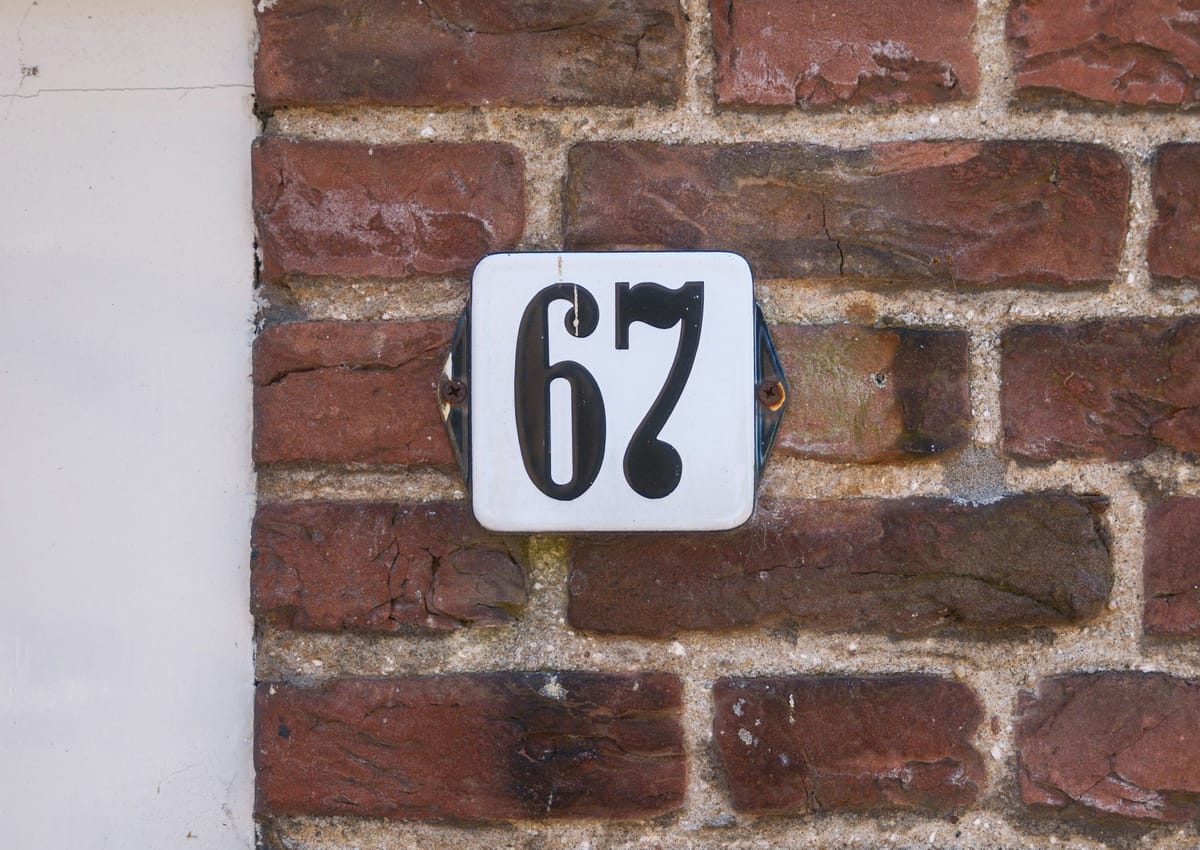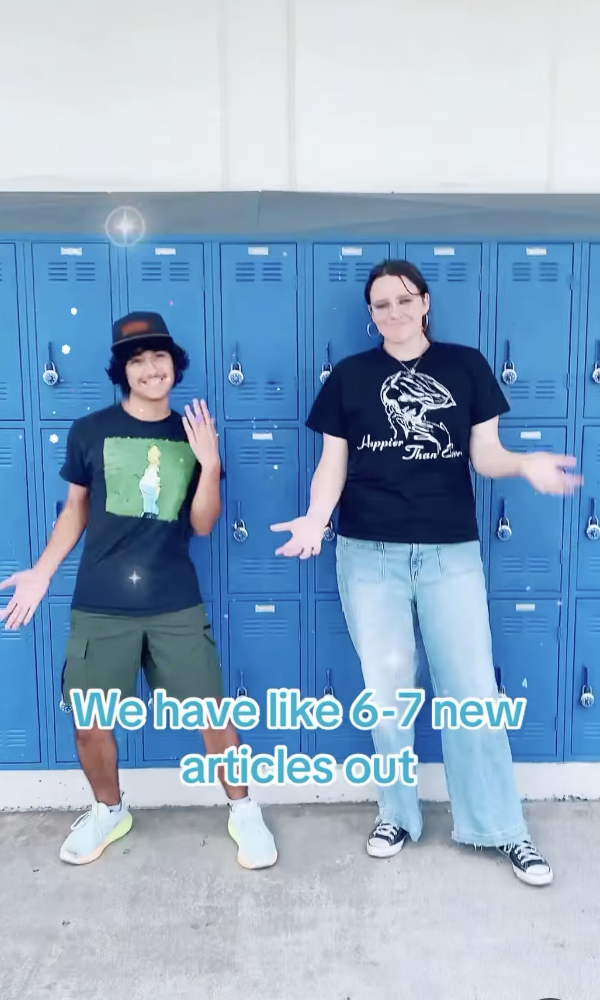Students Everywhere are Saying “Six Seven,” But What Does it Mean?
Gen Z and Gen Alpha's latest slang trend is popping up in math classes and all over campuses.

If you're a parent or teacher, you may have witnessed students giggling or struggling to contain themselves when "67" or the sequence of numbers "six seven" is heard or seen.
“Six sevennnnnn,” kids may respond, drawing out how they pronounce the second digit and moving their hands up and down in opposite motions. For a visual on this phenomenon, check out this recent Instagram post from the Los Alamitos Unified School District taken during a visit to a classroom at Weaver Elementary. Math teachers, especially, aren't strangers to hearing laughter erupt when the number is the answer to an equation.
What's so amusing about “six seven?” These numbers represent the latest slang trend that Generation Z and Generation Alpha can’t seem to get enough of. It's become a rare case of students across all ages and backgrounds adopting the same phrase and somehow incorporating it into their daily conversations.
“My understanding is that it was just a silly video that somebody saw, and then that they shared it, and it blew up and everybody has seen it now. And so, because everybody else is doing it, it becomes popular and funny,” said Vicki Gallagher, an algebra teacher at Los Alamitos High School who has experienced what happens when the phrase comes up in class.
It's not just math classes where “six seven” is uttered. It pops up in other classes as well. If a teacher asks for “six or seven sentences,” or if an assignment should only take “six to seven minutes,” students may, at the very least, grin, acknowledge the trend and maybe engage in the hand motion.
Some students love to use the phrase, while others view the trend as unnecessary and the latest example of a brain-rot term popularized via social media.
“I hate ‘six seven’ so I don't (use it),” said Los Alamitos High School freshman Grayson Tuomala. “Mrs. Whitfield gets annoyed and talks about how dumb it is (and) Dr. Coriaty learned it from a student (but) I don't think he cares.”
Alternatively, Grayson's classmates decided to capitalize on the trend in a video to promote their campus newsroom, The Griffin Gazette.

Why has “six seven” become so popular?
Thanks to social media, especially the short-form video app TikTok, this trend quickly spread among students of all ages across the country. The phrase was originally popularized by the song “Doot Doot (6 7)” by the rapper Skrilla. The song, posted in February, was then used to reference popular basketball player LaMelo Ball's height of 6 foot 7 inches in TikTok edits.
As the edits earned more views and shares, the trend only exploded into a wildly popular internet meme. It was even used by athletes at press conferences, including basketball star Paige Bueckers. It's also inspired plenty of "six seven” themed merchandise for sale on Amazon.
What does “six seven” mean?
What can make this trend difficult to understand is that students repeat “six seven” simply because it's a trend, even though it has no obvious definition.
“I say ‘six seven’ because it's funny,” LAHS freshman Evan Mitchell explained. But what makes it so funny is harder to pinpoint.
“Six seven” isn’t necessarily used by students to fit in with their peers, but rather because they've learned to think that it's funny. It can be used as a response to someone or as a joke that doesn't contain a punchline.
Context for when the words might be used include when they fit a response to a question, such as “What time did you wake up?,” or “What was the score at the basketball game?”
Some might even describe Gen-Z or Gen Alpha's use of “six seven” as "rage-baiting” the adults in their lives to make their friends laugh.
Middle school teacher Philip Lindsay has gained fame (one million followers on Instagram) for explaining memes and slang popular with kids. He offered this explanation for six seven: “It’s a number that is fun to say, popularized by a meme, with the hand motions, and it just doesn’t mean anything.”
It's worth noting that insider slang is not unique to these generations. Trendy words and phrases have repeatedly occurred in language over the years. For example, millennials in the early 2010s popularized the acronym “YOLO,” which means “you only live once."
Is “six seven” a problem in classrooms?
The phrase has been used in classrooms and even public conversations. While some may see this negatively, some teachers see it as way to engage with students.
Rather than condemning it, some teachers at LAHS are embracing it. Teachers in many departments, including math, have adopted the “six seven” trend into their classrooms. One Spanish teacher plays students a Spanish song about “six seven” or “seis, siete.”
At the elementary and middle school levels, teachers have been engaging students with the trend by saying "four five,” and letting their students finish by saying “six seven,” in an effort to get students’ attention. This is a new twist on traditional techniques teachers use to get students to quiet down, like saying "waterfall, waterfall," where students are then expected to respond with a "shhh" sound, mimicking a waterfall.
Other examples include elementary school teachers wearing "six seven" t-shirts for a dress up day, much to the delight of their pupils. A choir teacher in Michigan went viral for working with students to compose a song incorporating their favorite slang terms, including “six seven” and "slay."
A choir teacher in Michigan went viral for working with students to compose a song incorporating their favorite slang terms, including “six seven” and "slay."
A non-scientific poll from Spotlight Schools revealed some find the “six seven” trend can be distracting in class. Jared Lamb, a principal in Louisiana with more than 500K followers on Instagram, shared this advice on what to tell kids insisting on cracking "six seven" jokes in class.
"I know 'six seven' is all the hype right now, but I need your help with two things. First don't randomly call out 'six seven' in the middle of math class. Second, when six seven comes up in math class – because it will – I need your help with the class response," Lamb said, inviting kids to participate in the trend without being a distraction.
For Grayson, the LAHS freshman, the trend is something he can tolerate. “It's not a bad thing, it gets annoying sometimes, but it's not bad."
How to use “six seven” like you're between the ages of six to 17
It appears "six seven" is not going away any time soon. If you're a parent of a teenager or child who can't get enough of the phrase, it may be time for you to get in on the joke.
If you're subtracting six from seven, feel free to use the phrase. But don't just say “six seven.” Draw out your words – especially the “n” in seven – “Siiix sevennnnnn" and then raise your hands like the students in this video. It's a great example of how the trend is often portrayed down to the hand movements and includes the audio that originally made the trend so popular.
It should take six or seven minutes for you to master.
This story was written and reported by Alyssa Mathews, a junior at Los Alamitos High School and an editor at The Griffin Gazette.
Spotlight Schools' co-founder Jeannette Andruss contributed reporting.
